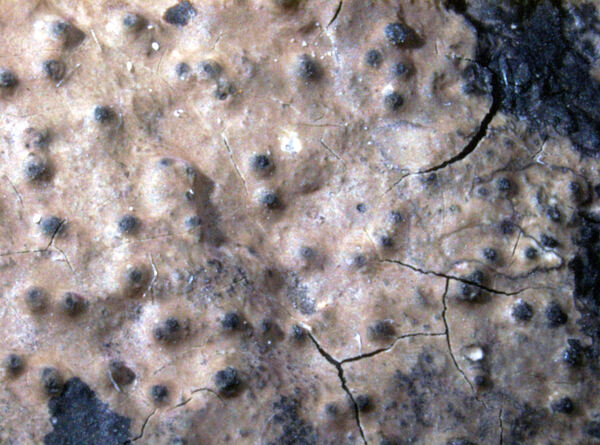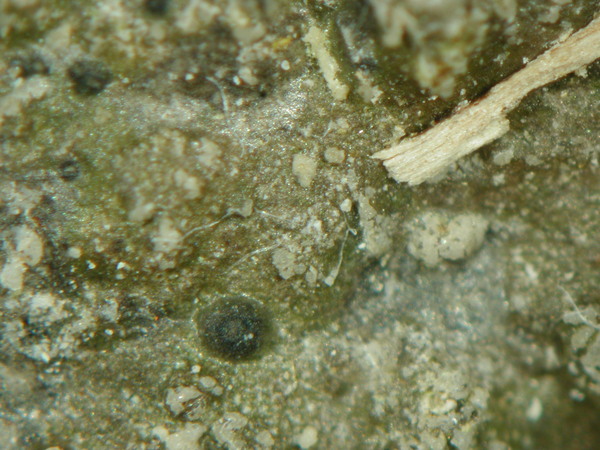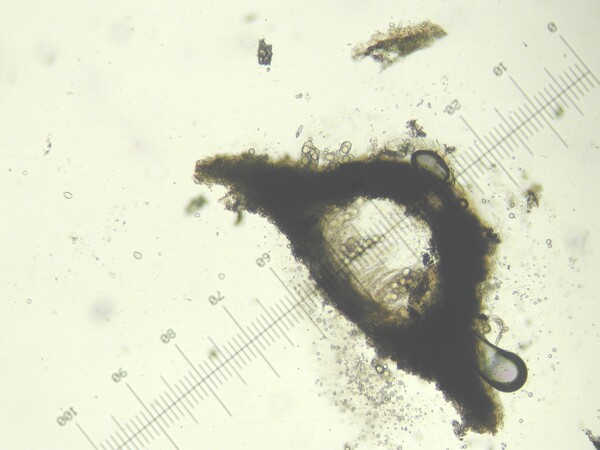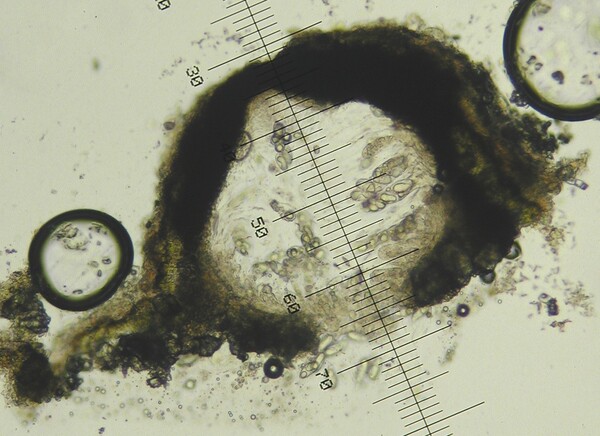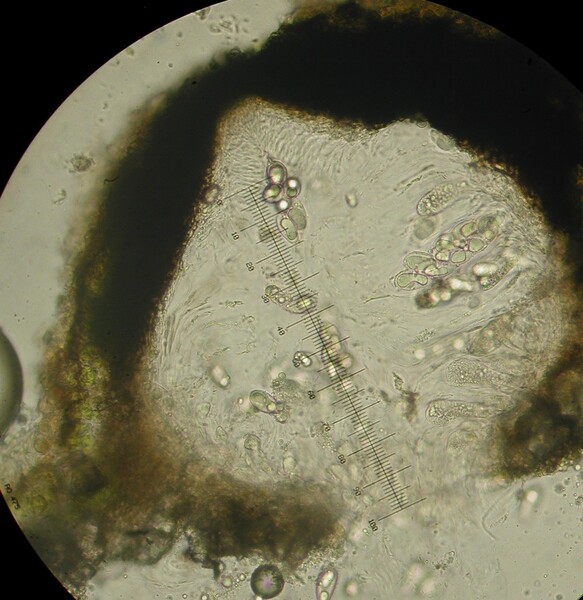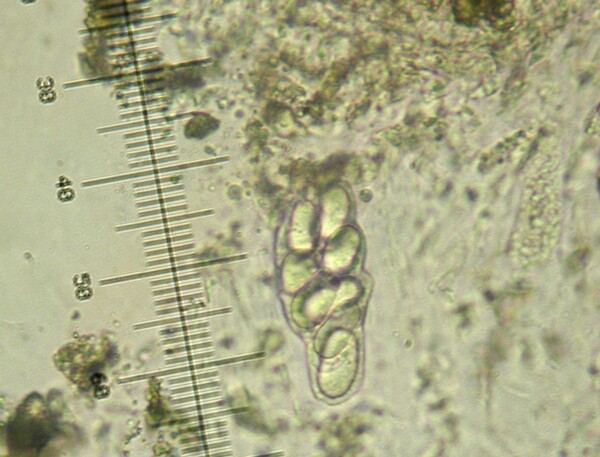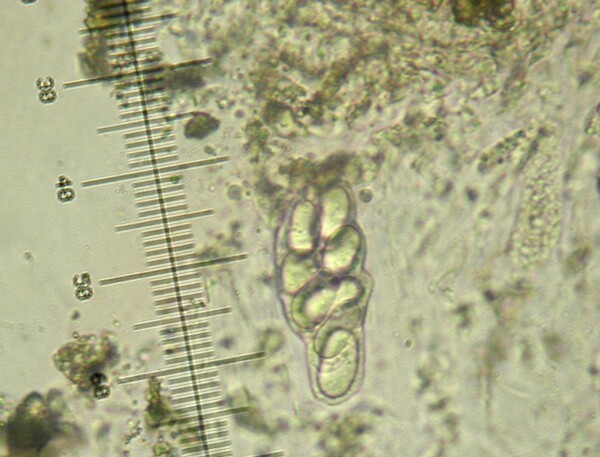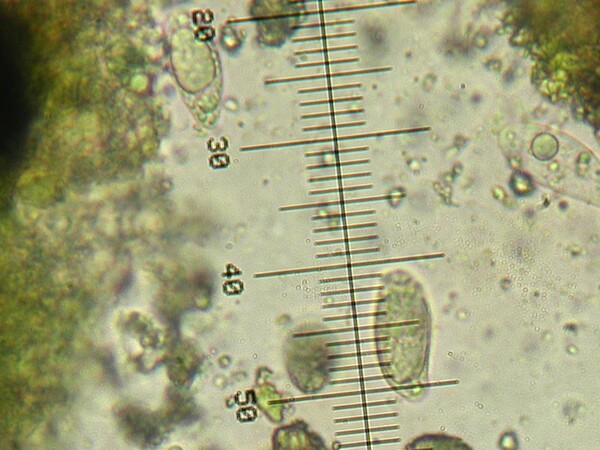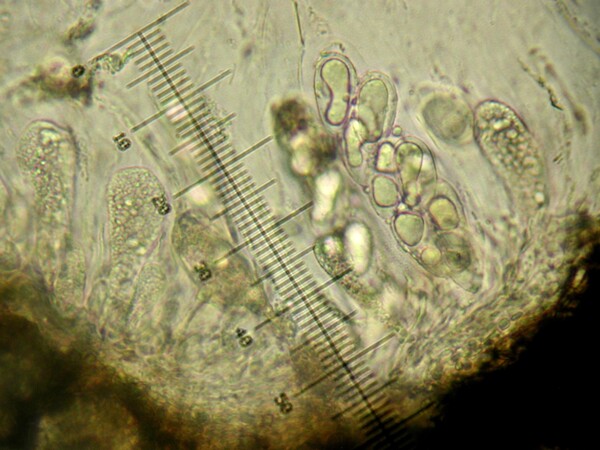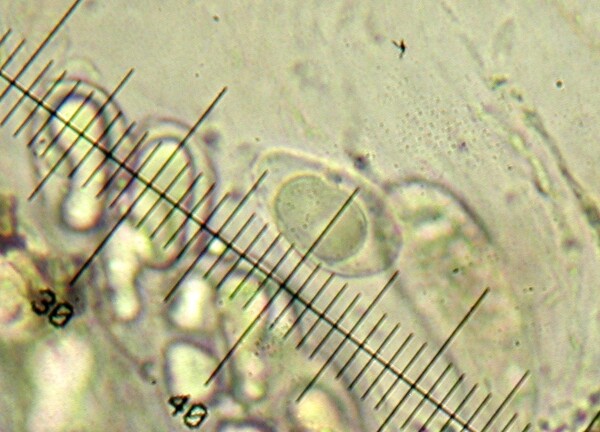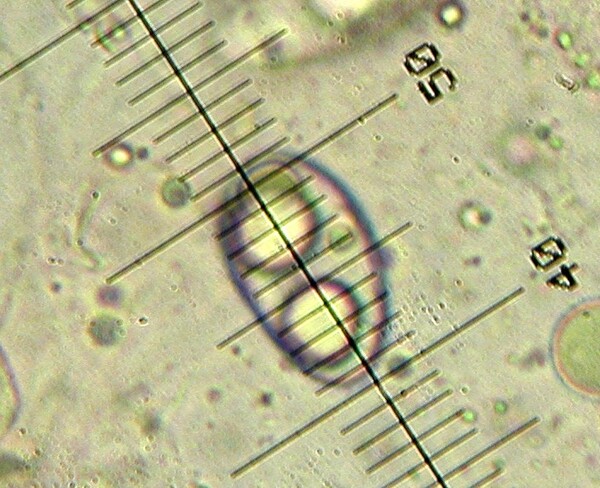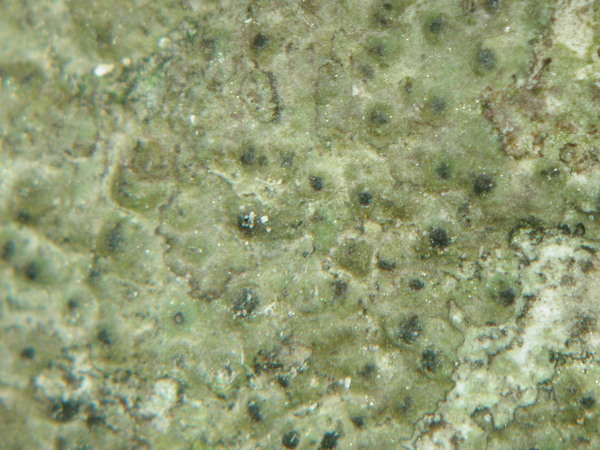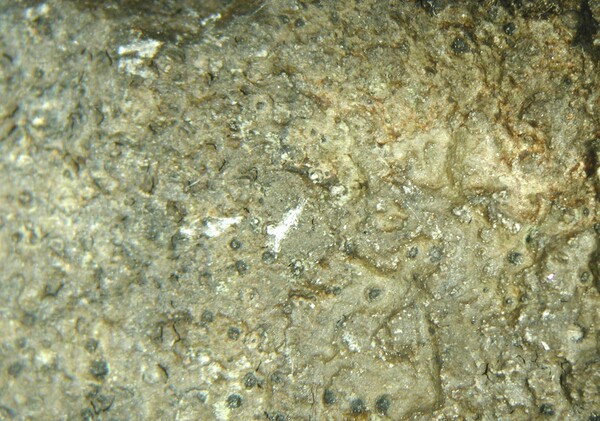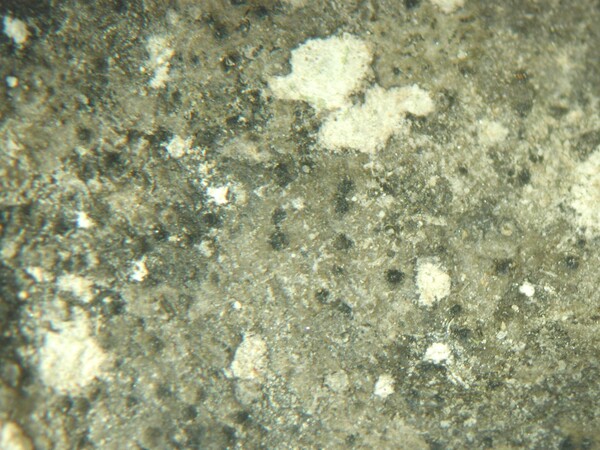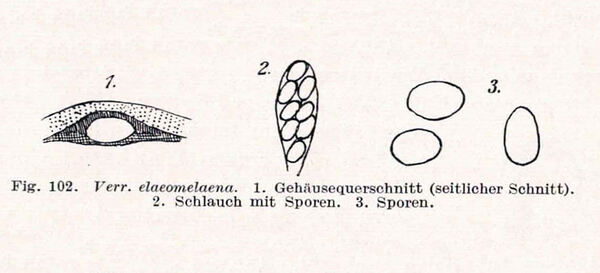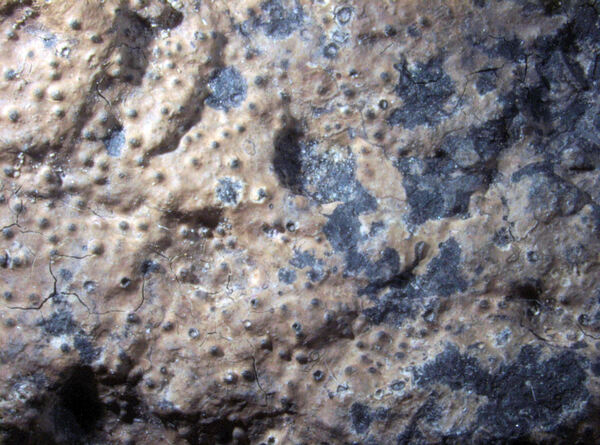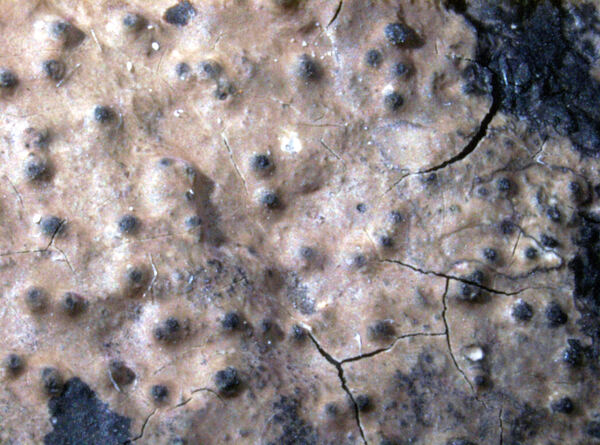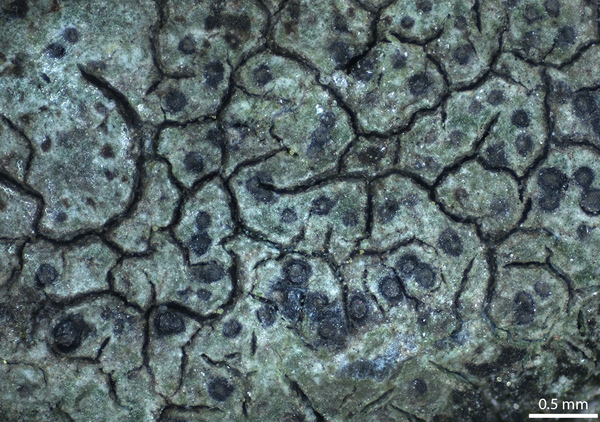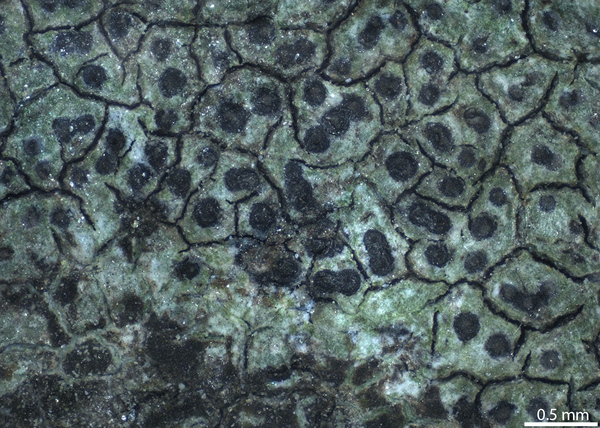Verrucaria elaeomelaena (A. Massal.) Arnold
Verh. zool.-bot. Ges. Wien, 18: 958, 1868. Basionym: Lithocia eleaomelaena A. Massal. - Atti Ist. Ven. Sc. Lett. Arti, ser. 3, 2: 380, 1856.
Synonyms: Verrucaria davosiensis Zschacke; Verrucaria degenerascens Nyl. ex A.L. Sm.; Verrucaria jurana Zschacke
Distribution: N - Ven (Lazzarin 2000b, Nascimbene & Nimis 2007, Nascimbene 2008, 2008c, Nascimbene & al. 2008b, 2009), TAA (Nascimbene & al. 2007b, 2022). C - Tosc, Sar (TSB 18724).
Description: Thallus crustose, episubstratic, continuous or (rarely) weakly cracked, smooth, subgelatinous when wet, 20-150 μm thick, greenish-grey to grey in shade forms, pale to dark brown in sun-forms, sometimes delimited by a thin, whitish prothallus. Cortex poorly developed; medulla not differentiated or sometimes forming a 5-75 μm thick, pigmented basal layer. Perithecia numerous (36-113/cm2) distinctly to weakly projecting, usually almost completely covered with a thin thalline layer. Involucrellum 17-25 μm thick, of very variable extension, from apical to reaching base-level; exciple 0.2-0.35 mm across, the wall colourless or brownish in upper part, always colourless at base, with a transparent area between exciple base and the basal part of involucrellum; hamathecium of (18-)20-25(-40) μm long periphyses and periphysoids, interascal filaments absent; hymenial gel hemiamyloid, I+ red (I+ blue at very low concentrations of I), K/I+ blue. Asci 8-spored, pyriform to obovate, I-, fissitunicate, the wall thickened above, with an ocular chamber, dehiscent by extrusion of an endotunica to form a delicate rostrum, Verrucaria-type. Ascospores 1-celled, hyaline, broadly ellipsoid to ovoid, (18-)21-27(-32) x (9.5-)12-14(-16) μm, when young often with a distinct gelatinous sheath. Photobiont chlorococcoid, the cells arranged in vertical rows. Spot tests: K-, C-, KC-, P-, UV-. Chemistry: without lichen substances.
Note: a cool-temperate to boreal-montane, perhaps circumpolar species, almost perennially submerged in cold montane to alpine creeks, emerging only in very shaded situations; perhaps more widespread in the Alps. In Northern Europe this name was often used for V. funckii. According to Thüs (in litt.), based on the currently available data from north of the Alps, V. elaeomelaena s.str. appears to be restricted to limestone, but it cannot be separated by morphology alone from several other unnamed lineages which grow on calcareous and siliceous substrata alike, especially in deep shade. As there is no sequenced material yet of V. elaeomelaena s.str. from Italy, I adopt a wide concept of the species, including also silicicolous samples.
Growth form: Crustose
Substrata: rocks
Photobiont: green algae other than Trentepohlia
Reproductive strategy: mainly sexual
Periodically submerged (e.g. in creeks)
Commonnes-rarity: (info)
Alpine belt: very rare
Subalpine belt: rare
Oromediterranean belt: very rare
Montane belt: very rare
Submediterranean belt: absent
Padanian area: absent
Humid submediterranean belt: absent
Humid mediterranean belt: absent
Dry mediterranean belt: absent
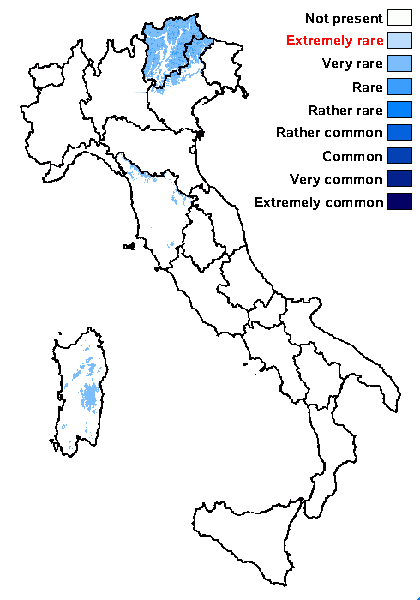
Predictive model
Herbarium samples
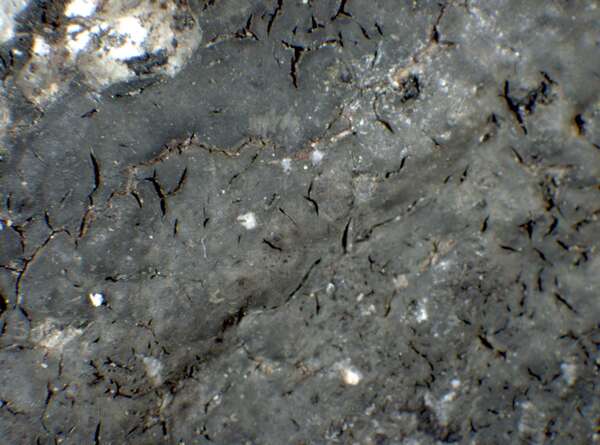

P.L. Nimis; Owner: Department of Life Sciences, University of Trieste
Herbarium: TSB (34463)
2002/01/15
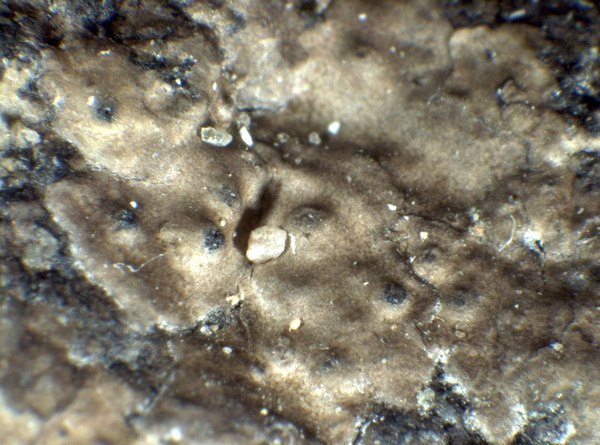

P.L.Nimis; Owner: Department of Life Sciences, University of Trieste
Herbarium: TSB (36802)
2008.02.25
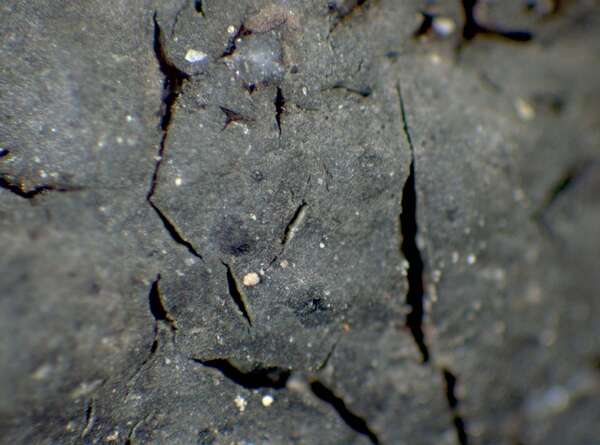

P.L. Nimis; Owner: Department of Life Sciences, University of Trieste
Herbarium: TSB (34463)
2002/01/15
Growth form: Crustose
Substrata: rocks
Photobiont: green algae other than Trentepohlia
Reproductive strategy: mainly sexual
Periodically submerged (e.g. in creeks)
Commonnes-rarity: (info)
Alpine belt: very rare
Subalpine belt: rare
Oromediterranean belt: very rare
Montane belt: very rare
Submediterranean belt: absent
Padanian area: absent
Humid submediterranean belt: absent
Humid mediterranean belt: absent
Dry mediterranean belt: absent

Predictive model
| Herbarium samples |


P.L. Nimis; Owner: Department of Life Sciences, University of Trieste
Herbarium: TSB (34463)
2002/01/15


P.L.Nimis; Owner: Department of Life Sciences, University of Trieste
Herbarium: TSB (36802)
2008.02.25


 Index Fungorum
Index Fungorum
 GBIF
GBIF
